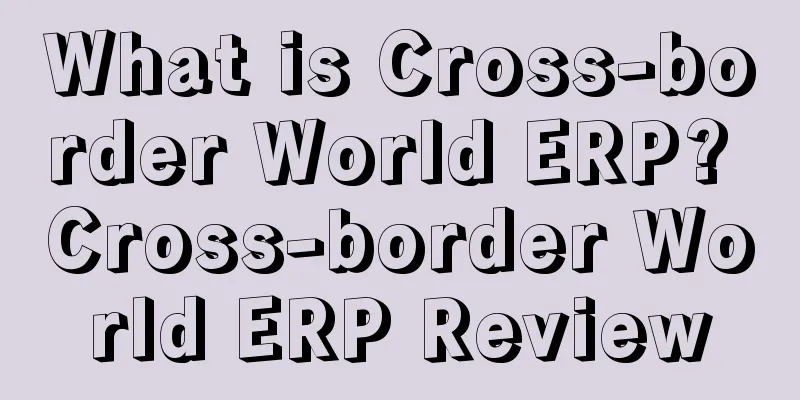My brother-in-law is causing trouble again! He not only does not allow shipments but also limits inventory. Here are some ways for sellers to save themselves!

|
Recently, many sellers have reported that Amazon’s FBA logistics policies are changeable. Amazon’s Black Friday and Cyber Monday performance hit a new high, causing warehouse staff to be unable to focus on one thing while distracting others. As a result, sellers suffered again. The policy restrictions came too suddenly and they were caught off guard. Japan FBA sets an inventory storage limit Recently, some buyers reported receiving email notifications about changes to the upper limit of Amazon Japan’s logistics inventory storage. The email content is as follows: Now, as we are entering the busy business period at the end of the year, the inventory storage space of FBA warehouses is approaching the upper limit. In order to maintain the same quality of service for all sellers, FBA warehouses have decided to reset the upper limit of inventory storage. Based on the inventory on December 11, 2019, the upper limit of inventory that sellers can entrust to FBA warehouses for safekeeping is as follows. Standard product inventory limit: 500 Maximum inventory quantity for large items: 259 According to feedback from sellers, the upper limit for each seller is different, and Amazon will allocate the upper limit based on the seller's store situation. In theory, it is a comprehensive measure of factors such as backend sales volume and inventory turnover rate. In any case, such storage capacity restrictions are really unfriendly to sellers, and Amazon sends out email notifications when the policy takes effect. Sellers are caught off guard and passively receive notifications, and have no time to respond. For example, if a seller's account has a product that sells very well and needs to add more inventory, but other products have redundant inventory due to previous decision-making errors, then the capacity is bound to be insufficient. The seller can either not increase the inventory of the product, or can only reduce the inventory by selling it at a low price, changing warehouses, labeling, or abandoning it. In any case, it is a loss. Fortunately, Amazon said that it will relax the restrictions as soon as the warehouse inventory space is relieved. However, we can only wait for Amazon's notification on when the restrictions will be relaxed. Coincidentally, this kind of thing happened not only on the Japanese site, but it broke out even more violently on the American site a few days ago!
US FBA stops accepting shipments during Christmas A few days ago, the sellers’ group was discussing this notice: Christmas season delivery will stop on December 3, and replenishment should start from January. Many sellers are angry. Amazon only emailed sellers on December 9 to inform them of the suspension of delivery on December 3. Not only did you act without authorization, but you also dragged it out for so many days. What should the sellers who need to replenish their goods do? In response to this issue, the seller kept opening cases to ask Amazon customer service, and then the investment manager came out to answer. The reply was roughly: Products that are already in transit will not be affected, and sellers can continue to ship if they can create a shipping plan in the background. However, the speed of product listing will be extended, and the listing time cannot be guaranteed. Therefore, it is recommended to replenish stocks from January if there is no rush. Regarding the reason for restricting sellers from shipping, a customer service representative said: Due to the shopping season, there will be a large number of orders that need to be delivered during this period. The manpower in the warehouse here may be more concentrated on delivering orders, and the manpower for receiving goods may be insufficient, so the receipt of goods on the shelves will be very slow. To put it bluntly, the orders exploded, and the warehouse staff were busy shipping the goods, so they had no time to put the products on the shelves. After all, it was more important for my brother-in-law to make money!
It seems that there are many things happening during the peak season, and sellers are also worried about it. However, when it comes to inventory restrictions, I have to mention Amazon’s inventory performance indicators. Inventory Performance Indicators The Inventory Performance Index is an inventory index set by Amazon to enable sellers to better manage their inventory, further promote sellers to optimize their inventory management, and reduce the backlog of products in the warehouse. On the other hand, the plan can also ease the pressure on Amazon warehouses, save manpower and warehouse space. Previously, Amazon announced that starting from January 1, 2020, the US site will increase the IPI compliance value for warehouse restrictions to 400 (previously 350). The specific rules are as follows: IPI score < 400 points Limited storage capacity Excess storage capacity charge (existing storage capacity - granted storage capacity) *Monthly storage rent excess fee is US$10 per cubic foot IPI score>=400 points Unlimited storage capacity for the next quarter, and remain unchanged for one quarter, with no excess storage fees Whether sellers can have unlimited inventory capacity in the first quarter of 2020 is determined by the IPI score in the fourth quarter of 2019. Therefore, inventory performance at the end of the year is very important, as it affects the inventory capacity for the coming year. According to the chart below, there will be a second review during the week of December 23rd, and if the seller’s IPI score is still below 400, Amazon will impose storage restrictions in the first quarter of 2020.
So, how can you improve your IPI score? A seller’s IPI score is related to these three factors: 1. Reduce excess inventory: The excess inventory percentage is an assessment of the excess inventory situation in the past 90 days; 2. Improve sales rate: Sales volume is an assessment of the inventory sold in the past 90 days, which requires your product volume and sales volume to be balanced. Avoid inventory aging and becoming redundant; 3. Repair product information: The percentage of unsalable inventory with no sales information is an assessment of the inventory that cannot be sold due to problems with the front-end page information/listing. The product information problem needs to be repaired to make the product available for sale. Therefore, the best way to improve the IPI score is to reduce redundant or slow-moving inventory and increase inventory turnover. Sellers can improve their IPI scores by conducting promotional activities, creating removal orders, advertising products, improving search keywords, and optimizing product information. I think the Japanese site’s stock keeping limit is based on the IPI score. Judging from my brother-in-law’s recent operations, sellers should also pay attention to the issue of inventory turnover in the future. After all, as Amazon continues to grow, warehouse management will become more and more refined. It is a general trend to limit sellers through inventory capacity and transfer pressure from Amazon warehouses.
(Some of the materials and screenshots in this article are from Amazon Global Selling) |
<<: This site is "dead"! Just now, Amazon officially announced...
>>: Amazon’s big event of the week! Amazon’s official listing optimization service is launched
Recommend
U.S. e-commerce sales increased 8% year-on-year in June
It is learned that according to foreign media repo...
What is Rubicon Project? Rubicon Project Review
Rubicon Project is an American online advertising ...
How to combine Facebook ads and email marketing to increase conversion rates
Recently, social media marketing and advertising ...
What is Yopai Chuhai? Yopai Chuhai Review
As a cross-border e-commerce self-media, Yoopai is...
Exceeding expectations! Walmart's Q4 revenue is $164 billion, and net profit increased by 76.2%!
It is learned that on February 21, Walmart release...
Labor negotiations at US West Coast ports are at a stalemate! Multiple industry associations urge the White House to intervene!
WASHINGTON (Reuters) - The National Retail Federat...
What is UNCTAD? UNCTAD Review
The United Nations Conference on Trade and Develop...
Shein officially announced its "platform model" strategy, revealing two important pieces of information
It is learned that on May 4, Shein officially issu...
Free posting of discount website for Chinese Americans, I won’t allow you to not know about it!
What Zhaodanmao brings to you today is a channel w...
What is Amazon Launchpad? Amazon Launchpad Review
Amazon Launchpad--Amazon Inventor Program. Amazon ...
Critical hit! Small and light commodity plan cancelled, Amazon adjusts FBA delivery fees again
Half a year later , Amazon has once again extended...
More than 30% of consumers plan to cut spending, and this year's US shopping season may be particularly cold
It is learned that according to the latest survey ...
What is Omnisend? Omnisend Review
Omnisend is a sophisticated e-commerce marketing p...
What is Yiguo Technology? Yiguo Technology Review
Yiguo (Shenzhen) Technology Co., Ltd. was establis...
What is the Global Shopping Knight Privilege? Global Shopping Knight Privilege Review
Global Shopping Knight Privileges is a membership-...









